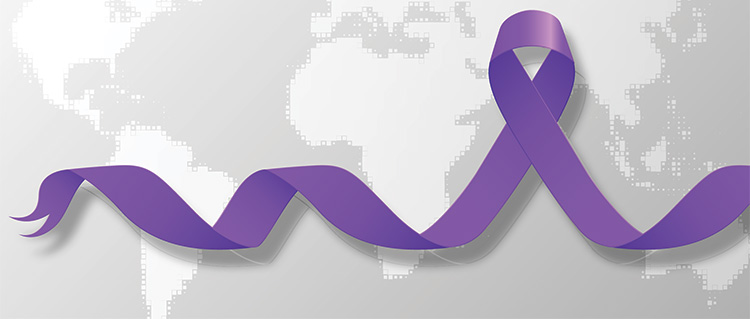Prevention of NCDs

WHO is focused on preventing deaths from noncommunicable diseases (NCDs) by addressing the main risk factors (tobacco use, unhealthy diet, physical inactivity, harmful use of alcohol and air pollution) and reducing cancer. NCDs, including heart disease, lung disease, cancers and diabetes are the leading cause of death globally and in the Eastern Mediterranean Region, where more than 2.8 million people die from these diseases annually. Cardiovascular disease is the primary cause of NCD deaths, followed by cancer, respiratory disease, and diabetes. The rates of mental health disorders, including depression and anxiety, are also high in the Region. NCDs are responsible for 66% of all deaths in the Region and result in premature deaths before the age of 70, having a negative impact on families, health systems and economies, and obstructing socioeconomic development.
Addressing NCD risk factors
By reducing the impact of NCD risk factors, we can significantly decrease the number of deaths. NCD prevention is an increasingly important issue, as the majority of premature deaths from these diseases (82%) occur in developing countries. Addressing these risk factors will not only save lives, but also have a significant impact on the economic development of these countries.
Avoid tobacco use
Avoid smoking and using any form of tobacco. If you are currently using tobacco products, quitting is highly recommended. There are effective strategies available to help you quit, such as toll-free quitlines, counselling, mobile text messaging programmes and nicotine replacement therapies. Consult with a healthcare professional for guidance on how to quit. Additionally, do not expose others to secondhand smoke.
Maintain a healthy diet
Improve your immune system and maintain a healthy weight through a nutritious diet that is high in fresh fruits and vegetables, low in sugar, salt and fat. Drink plenty of water (8–10 cups a day) instead of sugary drinks to reduce sugar intake and calorie consumption. Opt for fresh fruits instead of sugary snacks and limit portion sizes of sweets. Encourage healthy food habits in children by offering nutritious snack options. Avoid highly processed, baked and fried foods and opt for healthier cooking methods like steaming or boiling. Limit salt intake to 5 grams per day and aim to eat at least 400 grams (5 portions) of fruits and vegetables daily, excluding starchy roots such as potatoes, sweet potatoes and cassava.
Engage in physical activity
It is important to engage in physical activity regularly to maintain good health and reduce the risk of NCDs. For adults, it is recommended to engage in moderate-intensity physical activity for at least 30 minutes daily. For children and adolescents, it is recommended to engage in moderate- to vigorous-intensity physical activity for at least 60 minutes daily. Limit time spent sitting and take frequent breaks which can also help maintain a healthy lifestyle. Reduce screen time by engaging in non-group sports such as walking or running, and games not associated with screens which can be engaging and provide an opportunity for bonding as a family. It is also important to be mindful of media promoting harmful products, such as alcohol and to make healthy choices for children's entertainment and leisure.
Avoid harmful use of alcohol
Avoid consuming alcohol. Stay sober as this allows you to remain alert, react quickly and make wise decisions for yourself and those around you. Do not rely on alcohol to cope with emotions or stress. It is also important to not consume alcohol while taking medication as it can harm liver function and lead to serious health issues. Pregnant women should avoid alcohol altogether. If you struggle with alcohol abuse, seek help from a healthcare professional.
Reduce air pollution
Individuals can transform their lifestyles, work and consumption patterns to reduce air pollution. To reduce indoor air pollution, use safe building materials and furnishings, avoid strongly scented products, restrict smoking and use combustion appliances safely. Adequate ventilation and filtration are also helpful but, it is important to close windows and doors during periods of high outdoor air pollution levels. To reduce outdoor air pollution, increase active travel by walking or cycling instead of driving short distances, reduce open burning of agricultural land, reduce meat consumption (the livestock sector is a major contributor to greenhouse gas emissions), and reduce food waste. Clean fuels and tighter emission standards can also help. Increased physical activity through sustainable transport modes can also result in health benefits.
WHO’s three global cancer control initiatives

The cancer burden continues to grow in the Region, putting physical, emotional and financial strain on individuals, families, communities and health systems. Many low- and middle-income countries lack the resources and infrastructure to effectively manage this burden, resulting in many cancer patients lacking access to quality and timely diagnosis and treatment. However, in countries with robust health systems, survival rates for various types of cancer are improving due to better early detection, treatment and post-treatment care. To address inequities in cancer outcomes, it is necessary to improve access to high quality and appropriate resources. WHO’s three global cancer control initiatives bring together stakeholders from different countries and sectors with the common goal of reducing cancer and saving lives.
Cervical cancer elimination initiative
The global call to action to eliminate cervical cancer highlights the importance of early detection and effective management of the disease. WHO has set a goal to eliminate cervical cancer as a public health problem by 2120, and to reach this goal, countries are encouraged to achieve interim targets by 2030, including human papillomavirus (HPV) vaccination of 90% of girls by 15 years of age, screening of 70% of women using a high-performance test by 35 and 45 years of age, and treatment of 90% of women with pre-cancer and management of 90% of women with invasive cancer. A regional cervical cancer elimination strategy has also been developed in 2022 for the WHO Eastern Mediterranean Region to address the unique cultural, social, economic and geographical contexts in the Region. The elimination of cervical cancer as a public health problem is achievable through collective efforts from all stakeholders.
Global breast cancer initiative
WHO’s Global breast cancer initiative was established in 2021 and brings together various stakeholders with the goal of reducing breast cancer deaths by 2.5% per year, which would save 2.5 million lives over a 20-year period. The initiative aims to address the disparities in breast cancer outcomes, particularly in low- and middle-income countries where access to quality services is limited. WHO’s Global breast cancer initiative employs three key strategies – health promotion and early detection; timely diagnosis; and comprehensive breast cancer management – to achieve its objectives. WHO provides guidance to governments worldwide on how to improve their systems for detecting, diagnosing and treating breast cancer, which will also help them manage other types of cancer.
Global initiative for childhood cancer
WHO’s Global initiative for childhood cancer was established in 2018 and focuses on increasing the survival rate of children with cancer globally and improving their quality of life. It brings together various stakeholders with the goal of increasing countries' capacity to provide quality services for childhood cancer, and increasing prioritization of childhood cancer at the global, regional and national levels. The initiative aims to support over 50 countries by 2023 and has created a framework document, the CureAll framework, to guide policymakers, cancer control programme managers and hospital managers in implementing the initiative and strengthening childhood cancer programmes.
Global Hearts Initiative
The Global Hearts Initiative was established by WHO and the United States Centers for Disease Control and Prevention (US CDC) in 2016 to aid governments in improving the prevention and control of cardiovascular diseases (CVDs). It includes five technical packages that offer a range of high-impact, evidence-based interventions to have a significant effect on global heart health when used together.
On the prevention side: the MPOWER package focuses on tobacco control, aligned with the WHO Framework Convention on Tobacco Control; the ACTIVE package focuses on increasing physical activity; the SHAKE package focuses on reducing salt consumption; and the REPLACE package focuses on eliminating trans fats from the food supply. On the management side, the HEARTS technical package aims to enhance the management of CVDs in primary health care.
MPOWER package to defeat the global tobacco epidemic
ACTIVE package for increasing physical activity
SHAKE package for salt reduction
REPLACE package to eliminate industrially-produced trans fat from the global food supply








